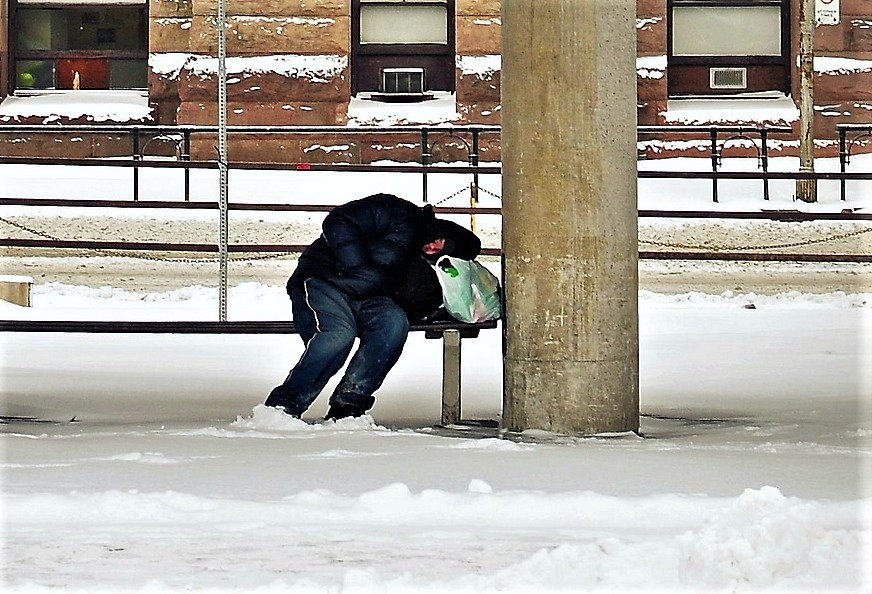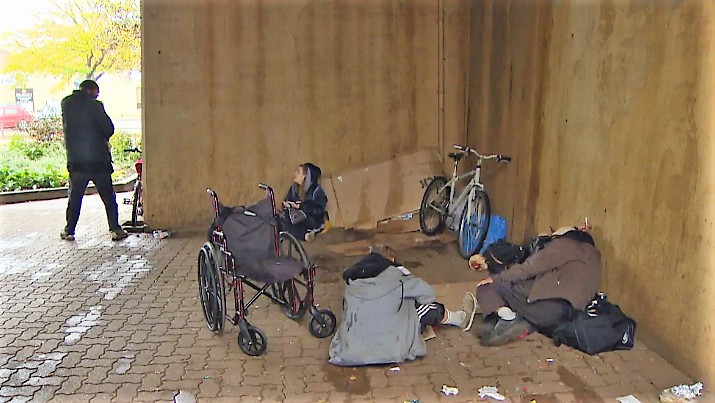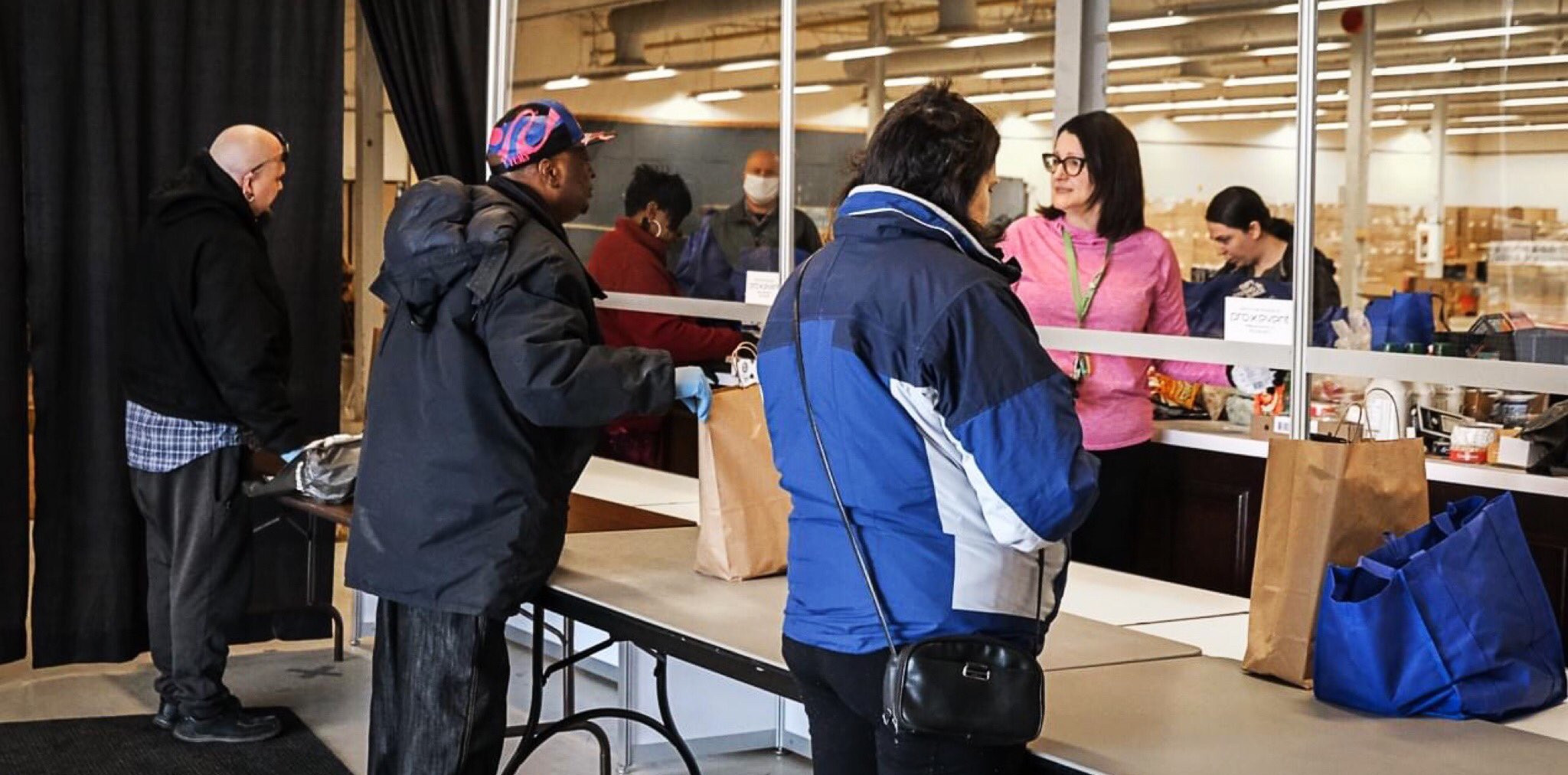
With extreme cold weather Peel Region’s unhoused have dangerously few options for shelter
After a relatively mild start to winter, the glacial weather finally arrived. Friday’s temperature hit a high of -15 C with a wind chill that hovered around a jolting -26 C and with temperatures sitting at about -20 C Saturday morning—accompanied by an alarming -30 C wind chill—the extreme cold weather puts Peel Region’s unhoused population at risk.
On Friday morning, Environment Canada issued an extreme cold warning for the Region of Peel, among other parts of Ontario, cautioning the public to be wary of wind chill temperatures around -30 C. While these dangerously cold temperatures are expected to only last a couple of days, they reveal a harsh reality: with the Region’s shelter occupancy currently averaging 117 percent of capacity, a part of the unhoused population will have to brace for the cold on their own.
These extreme weather events put vulnerable populations at risk and without enough investments being made by the Region while its current services continue to be notoriously overburdened, the situation has become increasingly severe in recent years.
On average, Peel’s shelters provide temporary relief to approximately 3,600 families, adults and youth experiencing homelessness annually. The Region also manages an outreach program that provides almost 5,000 annual in-person visits to those experiencing homelessness and living on the streets. According to Regional numbers, approximately 17,700 households live in the affordable housing system in Peel and an additional 11,500 receive emergency shelter, financial assistance and other supports. But the gap between current service levels and the need is large and growing.

Peel's unhoused population has increased in recent years, particularly around downtown Brampton. While the summer months offer the choice for these vulnerable individuals to sleep outside, in the winter months it becomes a decision between life and death.
(YouTube/CBC)
“We are experiencing a high level of housing need. All Region of Peel shelters are currently near full occupancy. However, the Region has secured overflow sites to ensure all residents requiring shelter have a safe place to stay,” a Regional spokesperson wrote in an email to The Pointer.
However, reporting by social services agencies such as the United Way suggests some individuals have difficulty accessing overflow shelter accommodations, often because people know the permanent shelter capacity is beyond its limits. Others cannot find ways to communicate their needs or transportation to help them reach emergency shelter accommodation.
With a relatively mild winter thus far, the current cold weather may only be the beginning of what’s to come. Peel Region is facing the need to address its growing housing problem, as more individuals are pushed from precarious arrangements to the streets, which can lead to dire outcomes during extreme weather.
Peel currently has a lack of shelter space available for the homeless to take refuge from the cold or extreme heat in the summer. It has a policy that no one looking for emergency relief will be turned away, using hotel space to accommodate those who cannot secure an overnight shelter bed.
The Region’s 2018-2028 Home For All homelessness and affordable housing plan, which used data that is six years old, noted shelters were full to capacity and cited an increase of 26.9 percent in shelter use, as well as an acute shortage of beds for victims of family violence and youth needing transitional support. It also points out that 70 percent of low-income households are living in unaffordable housing (meaning it costs more than 70 percent of their income) — requiring them to give up other necessities to afford a place to live and leaving them vulnerable to becoming homeless if a financial crisis strikes.
Those figures from 2017 have almost certainly gotten worse, as the the number of individuals and families on the affordable housing waitlist has ballooned—a staggering 28,000 households are waiting for affordable housing assistance in Peel, a 115 percent increase from the 13,000 households on the list in 2018, and this figure only represents those who have registered with the Region for support.
The few overnight facilities available are severely overcrowded and hard to access. The Peel Region website recommends six facilities: three in Brampton and three in Mississauga (one temporary), all of which are located either close to city limits or in hard-to-access industrial areas. Brampton’s recreation facilities are also open to serve as warm places where people in the community can seek temporary relief.
Mississauga offers several resources for those who are unhoused, which can be found on the City’s wesbite. For those looking to escape the cold throughout the day, all City of Mississauga Community Centres are also open and available for warming purposes during regular operating hours, but that still leaves individuals without a place to go overnight to shelter from the extreme cold.
The Region is also calling for community centres, faith-based organizations and other facilities to open for the homeless. The Region will support host organizations with funding for this “Out of the Cold” drop-in program which runs throughout the winter and offers overnight accommodations, snacks, meals and access to washrooms.

The extreme cold often results in a spike in the need for services from all community support systems, like shelters and drop-in centres.
(Regeneration Outreach)
Those that require a shelter space to provide respite from the harsh outdoor conditions could find a place to sleep either at the Wilkinson Shelter — near the border with Mississauga — and Brampton Queen Street Youth Shelter, located near the city limits close to Etobicoke, at Queen Street and Goreway Drive. While Mississauga’s shelters are located closer to residential areas, all three shelters recommended by Peel Region are clustered close together near the border with Toronto, in the area where the QEW and the 427 intersect.
Shelter gaps are being seen in many corners of Peel.
The need for more shelter space comes as a lack of affordable housing and the pressures of poverty are becoming more common in many areas around the province. This is evident in communities across Peel where social services like The Mississauga Food Bank are seeing unprecedented numbers of clients seeking their services. Current demand is stretching the organization’s resources to the breaking point as it struggles to confront the widespread food insecurity plaguing the community.
The Mississauga Food Bank has been grappling with a significant increase in demand from vulnerable residents hit hard over the last two years during the pandemic and while food banks across the province are working to combat the growing demand, resources are finite, and the need is outpacing the capacity.
A 2020 report from the Region noted current ownership and rental housing prices are out of reach for 80 percent of Peel households. Housing costs and rental rates have skyrocketed to record increases in recent years, with ownership costs more than doubling in less than a decade and rental rates climbing much faster than incomes.
The Region’s approved 2023 budget shows Peel’s Housing Supports would increase by 9.3 percent from $141.9 million in 2022 to $155.2 million for 2023, but the data makes it clear this is not nearly enough.
“Demand for our services will continue to present significant challenges, despite the work being done to increase the availability of affordable units and to prevent homelessness. The fact is that current service levels meet less than 30 percent of need for affordable housing in Peel,” the Regional spokesperson explained. “This will be exacerbated by the Ontario Government’s Bill 23, which will have significant implications for housing affordability in Peel. Bill 23 will not make housing more affordable. In fact, it will make it more difficult for the Region to respond to the ongoing housing affordability crisis.”
A July 2018 staff report to Peel Region Council revealed that “Adult emergency shelters in Peel Region have often been at or beyond maximum occupancy since the second quarter of 2016. As a result, the adult shelter overflow protocol is being utilized, where families are placed in hotels/motels and single individuals are placed in cots within the same facility.”
On Thursday, Peel Region approved $23.7 million to overhaul Wilkinson Road Shelter, an adult shelter for men over 25, to increase the number of beds from 85 to 150 as part of its 2023 budget. An increase of $1.3 million, which includes hiring three additional full-time equivalent positions, was requested to manage this workload, in order to properly handle the Region’s shelter and overflow facilities. Another $2.7 million was also allocated for housing and shelter state of good repair projects.
“We are housing over 50 families a week in overflow hotels, in addition to refugees, families from the Ukraine and others facing emergencies,” the report states. “Use of overflow hotels for shelter clients and refugees is growing. The team has experienced significant increases in workload: the number of contracts has increased 113 percent.” Yet with limited funds and spaces available to meet the demand, these measures are not sustainable.
In recent years, refugee claimants have been adding to the strain on the shelter system. The 2018 staff report to the Region noted the number of individuals making use of Peel’s family shelter increased from 23 individuals in the third quarter of 2017 to 385 in the last quarter of that year, many of them part of large families who hoped to remain in the region long term. Between 2015 and 2017, refugee claimants were never more than about four percent of the shelter population; that number jumped to 12 percent in 2018 — about 1,127 individuals of the 9,566 who had used the shelters at some point during the year.
The Region was not able to comment on how many shelter spaces have been added to Peel's system since 2019, or if there are additional shelter spaces being added in 2023 following the budget approval on Thursday.
Any Peel resident requiring shelter can call the Region’s intake line at 905-450-1996 or visit the Region’s website for more information.
Email: [email protected]
Twitter: @mcpaigepeacock
COVID-19 is impacting all Canadians. At a time when vital public information is needed by everyone, The Pointer has taken down our paywall on all stories relating to the pandemic and those of public interest to ensure every resident of Brampton and Mississauga has access to the facts. For those who are able, we encourage you to consider a subscription. This will help us report on important public interest issues the community needs to know about now more than ever. You can register for a 30-day free trial HERE. Thereafter, The Pointer will charge $10 a month and you can cancel any time right on the website. Thank you
Submit a correction about this story


